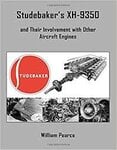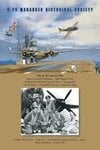Navigation
Install the app
How to install the app on iOS
Follow along with the video below to see how to install our site as a web app on your home screen.
Note: This feature may not be available in some browsers.
More options
You are using an out of date browser. It may not display this or other websites correctly.
You should upgrade or use an alternative browser.
You should upgrade or use an alternative browser.
A new book in my library. (4 Viewers)
- Thread starter Wayne Little
- Start date
Ad: This forum contains affiliate links to products on Amazon and eBay. More information in Terms and rules
More options
Who Replied?Aaron Brooks Wolters
Brigadier General
After almost three months this finally came today.

fubar57
General
Aaron Brooks Wolters
Brigadier General
Looking through it now. I have a J to build, would like to do a lesser known craft. This may give me some ideas.
Looking through it now. I have a J to build, would like to do a lesser known craft. This may give me some ideas.
Nice one Aaron, I have been saving quite a few B-25 pictures of all makes and models from the web and other sources and still adding every day if looking for something specific.
Thanks Paul
- Thread starter
- #6,866
Good stuff.
Purchased due to an interest in test pilots, this book is fun to read as a biography of his test flying days. This is more of a memoir than a book describing the technical aspects of flying unfamiliar Allied aircraft. Therefore, the reader will need to do a bit of ferreting to glean the technical opinions/commentary on performance on all the aircraft he flew as they read through Mr. Lerche's well written anecdotes. A thoughtful read will reward the patient reader with insights into the aircraft flown by Mr. Lerche.
The title itself; "Luftwaffe test pilot: Flying captured Allied aircraft of World War 2" is somewhat misleading as the book also covers German and Italian aircraft as well. So, although it was not as focused as I would have liked on flight test of allied aircraft, the commentary on the contemporary German and Italian aircraft flown by the author were an unexpected pleasure. Other reviewers have commented on the disjointed nature of the book, I didn't find it too troubling. While coming across as somewhat "scrubbed", the recounting of his beginnings with the soaring clubs was also interesting.
Highly recommended for those with a more esoteric interest in WWII aviation who are willing to slog through some awkward parts to find the diamond.
The title itself; "Luftwaffe test pilot: Flying captured Allied aircraft of World War 2" is somewhat misleading as the book also covers German and Italian aircraft as well. So, although it was not as focused as I would have liked on flight test of allied aircraft, the commentary on the contemporary German and Italian aircraft flown by the author were an unexpected pleasure. Other reviewers have commented on the disjointed nature of the book, I didn't find it too troubling. While coming across as somewhat "scrubbed", the recounting of his beginnings with the soaring clubs was also interesting.
Highly recommended for those with a more esoteric interest in WWII aviation who are willing to slog through some awkward parts to find the diamond.
Attachments
Looks pretty interesting thus far. Lots of test rig photo's, a bit on Waldo Waterman, and a history of the company.
Here is the review:
Mr. Pearce has provided an excellent overview of the XH-9350, the contemporary factors that drove its development and its demise.
This superlative volume is divided up into chapters covering the history of Studebaker, their involvement in the development of General Aviation engines via Waldo Waterman prior to WWII and their WWII involvement with the Wright R-1820. Other chapters place the XH-9350 in perspective, describing other large displacement engines that were developed or proposed between 1917 and 1952.
The meat and potatoes chapter on development of the engine is well illustrated with photographs, charts and manufacturing drawings. (Even the "Context" chapter is lavishly illustrated with items that could also have been used in the development chapter.) This volume does not want for illustrations at all.
The additional chapter on the Studebaker built J47 and the twilight of Studebaker as a corporation are excellent bookends to a stellar volume. The appendix is essentially official documentation/correspondence between the involved parties and makes for some interesting reading when considering the contemporary optimism at the beginning of the project.
While there is plenty here for people interested in aviation history, except for someone wising to build a scratch model of the engine, there is there is nothing here for the modeler.
Overall, unabashedly recommended for anyone with an interest in aero-engines or engine design.
Here is the review:
Mr. Pearce has provided an excellent overview of the XH-9350, the contemporary factors that drove its development and its demise.
This superlative volume is divided up into chapters covering the history of Studebaker, their involvement in the development of General Aviation engines via Waldo Waterman prior to WWII and their WWII involvement with the Wright R-1820. Other chapters place the XH-9350 in perspective, describing other large displacement engines that were developed or proposed between 1917 and 1952.
The meat and potatoes chapter on development of the engine is well illustrated with photographs, charts and manufacturing drawings. (Even the "Context" chapter is lavishly illustrated with items that could also have been used in the development chapter.) This volume does not want for illustrations at all.
The additional chapter on the Studebaker built J47 and the twilight of Studebaker as a corporation are excellent bookends to a stellar volume. The appendix is essentially official documentation/correspondence between the involved parties and makes for some interesting reading when considering the contemporary optimism at the beginning of the project.
While there is plenty here for people interested in aviation history, except for someone wising to build a scratch model of the engine, there is there is nothing here for the modeler.
Overall, unabashedly recommended for anyone with an interest in aero-engines or engine design.
Attachments
Last edited:
Thank you.Great info Jetcal
Wow, real mixed feelings about this. The book claims great pedigree and the appendices are great. It's calling VB-6 "V-6" the Zero the "M6A" that just kill giving the book a higher rating for me.
Not recommended for modelers. If you're interested in a oral history of pre-war and early Army Air operations in the Pacific/Aleutians at $14.00 the book is a excellent buy if you can get past the typos.
Not recommended for modelers. If you're interested in a oral history of pre-war and early Army Air operations in the Pacific/Aleutians at $14.00 the book is a excellent buy if you can get past the typos.
Attachments
Aaron Brooks Wolters
Brigadier General
Nice one Aaron, I have been saving quite a few B-25 pictures of all makes and models from the web and other sources and still adding every day if looking for something specific.
Thanks Paul
Thank you Paul. Not sure what I am looking for. Just something that catches my interest.
Greg Boeser
1st Lieutenant
Ain't no decent early B-26 models out there anyway, unless you are talking about the pair that are for sale by Platinum Fighters. Great 1:1 project.Wow, real mixed feelings about this. The book claims great pedigree and the appendices are great. It's calling VB-6 "V-6" the Zero the "M6A" that just kill giving the book a higher rating for me.
Not recommended for modelers. If you're interested in a oral history of pre-war and early Army Air operations in the Pacific/Aleutians at $14.00 the book is a excellent buy if you can get past the typos.
As for the book, I liked the oral history as it shed light on aspects of the development of the B-26 as a torpedo bomber that are not to be found anywhere else.
Some typos aren't typos, but direct quotes by the men who flew them. As such, they reflect the incomplete information known to these men when they were fighting the war.
Some typos aren't typos, but direct quotes by the men who flew them. As such, they reflect the incomplete information known to these men when they were fighting the war.
Great point! I went back to double check. They appear to be from the editor. At any rate, my review is on line at LibraryThing and Amazon. Maybe Mr. Walsh will respond.
Augsburg Eagle
Airman 1st Class
Got itBut "Mosquitos über Berlin" will come the next days
No telephone or mails today
We need a full report Airman!
Augsburg Eagle
Airman 1st Class
Give me some days.We need a full report Airman!



